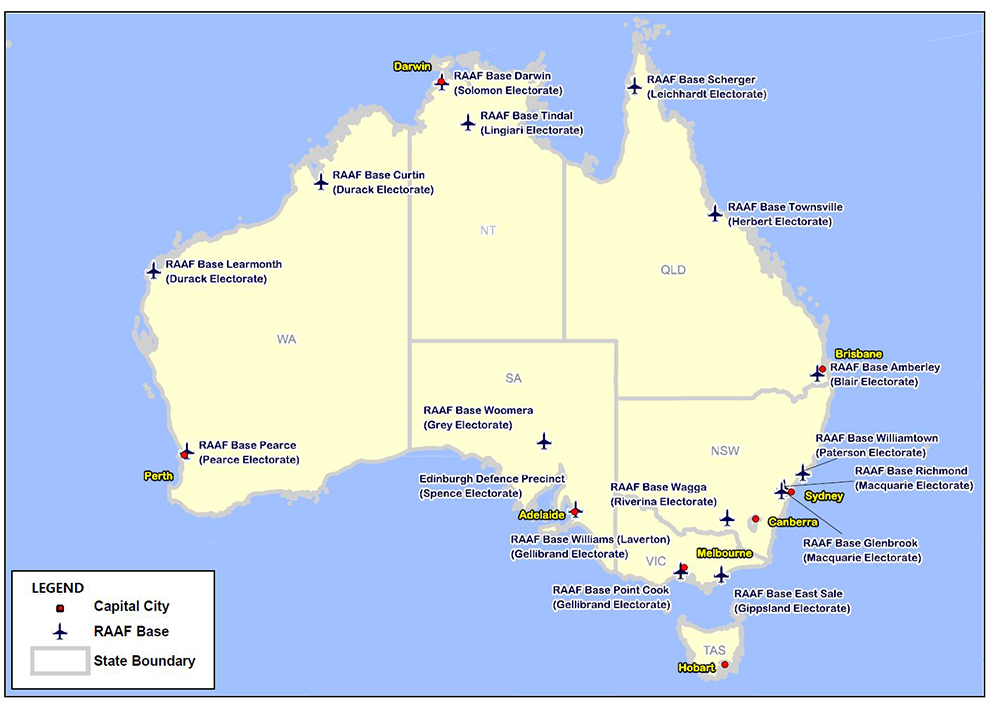Nascent air corps
There was less than a decade between the Wright brothers’ famous flight in 1903 and the decision in 1911 to establish an Australian flying corps. In 1909 the Government ran a competition to encourage the design of a flying machine for military purposes but, despite the £5,000 prize, there were no successful entries. In December 1911 the Government appropriated £4,000 for the establishment of the flying corps and on 30 December of that year advertised for ‘two competent machinists and aviators’ at an annual salary of £400 (The Gazette notice stated ‘The Commonwealth Government will accept no liability for accidents’). Two pilots and four mechanics were selected, laying the very early foundations of what was to become Australia’s air force.
Military Order No. 570 of 22 October 1912 approved the raising of a flying corps in Australia and orders were placed for the nascent flying corps’ first aircraft—two Royal Aircraft Factory BE2a, two Deperdussin single monoplanes, and a Bristol Boxkite for training purposes.
By 1913 the Government had appropriated £3,700 to establish an Aviation Instructional School on land bought from the Victorian state government at Point Cook, with a further £10,000 to be spent on infrastructure. The first pilot course started at the new Central Flying School in August 1914.
During World War I the Australian Flying Corps (AFC) was formed as a corps of the Australian Imperial Force, providing the genesis for Australia’s own air force. The AFC was disbanded at the end of the war and replaced by the Australian Air Corps (AAC). The AAC was quickly separated from the Army and one hundred years ago on 31 March the Australian Air Force was officially formed as Australia’s third military service. The ‘Royal’ designation was added on 13 August 1921 following approval from the monarch.
RAAF footprint in Australia
Since that time Royal Australian Air Force (RAAF) aircraft have evolved from the British-designed and Australian-built Avro 504K to the fifth-generation fighters and remotely piloted aircraft of today. The nature of operations has also evolved from outright war to electronic, cyber and space-based missions, as well as humanitarian assistance and disaster relief operations.
Much of this history is showcased on the RAAF website in a chronology of its 100-year journey. Throughout this journey the RAAF has established permanent air bases around Australia, from Point Cook (Vic), Laverton (Vic) and Richmond (NSW) in the early to mid-1920s, to Curtin (WA) and Tindal (NT) in the late 1980s and Scherger (Qld) in 1998. The map below shows the location of the main RAAF establishments by electorate.

Source: Parliamentary Library
Parliamentarians with RAAF service
Over the last 100 years a significant number of former RAAF members have served in the Australian Parliament. A large proportion fought in World War II, two of whom later became prime ministers: John Gorton and Gough Whitlam.
John Gorton (Senator for Victoria; Member for Higgins, Vic)
Gorton joined on 8 November 1940 and trained as a fighter pilot. He flew Spitfires with No. 61 Operational Training Unit, then Hurricanes with No. 135 Squadron in Singapore. Gorton crash-landed in January 1942, suffering serious injuries. On evacuation from Singapore on 13 February 1942 the ship he was travelling on, MV Derrymore, was torpedoed by the Japanese. He was rescued by HMAS Ballarat (I) and eventually returned to Australia on 7 March 1942. Gorton returned to operational flying on 16 June 1942, joining No. 77 Squadron in Darwin and then New Guinea. His final RAAF posting was as an instructor training pilots at 2 Operational Training Unit in Mildura. He separated from the RAAF in December 1944.
His parliamentary career included:
- Minister for Navy 1958–63
- Minister Assisting the Minister for External Affairs 1960–63
- Minister for the Commonwealth Scientific and Industrial Research Organisation 1962–63
- Minister for the Interior 1963–64
- Minister for Works 1963–67
- Minister Assisting the Prime Minister on Commonwealth Activities in Education and Research 1963–66
- Minister for Education and Science 1966–68
- Prime Minister 1968–71 and Minister for Defence in 1971
Edward (Gough) Whitlam (Member for Werriwa, NSW)
Whitlam joined on 8 December 1941 and was called up on 20 June 1942 to train and serve as a navigator. He was posted to No. 13 Squadron throughout the duration of the war. No. 13 Squadron protected convoys off Australia’s coast and conducted bombing raids against enemy supply lines in and around Timor, the Dutch East Indies, the Philippines, and surrounding islands. Whitlam separated from the RAAF on 17 October 1945.
His parliamentary career included:
- Australian Labor Party Deputy Leader of the Opposition 1960–67
- ALP Opposition Leader 1967–72
- Prime Minister 1972–75
- Minister for Foreign Affairs 1972–73
- Minister for Environment in 1975
- ALP Opposition Leader 1976–77
Since World War II other former RAAF personnel became parliamentarians, such as Jackie Kelly (1996–2007) who served in the RAAF from 1989 to 1996 as a legal officer, and Warren Entsch (1996–present) who served as an aircraft engine fitter from 1969 to 1978.